
Oil Wagon Train in front of the Grand Central Hotel, approx. 1895. Standing in front is
George B. McCalmont, Vice-President and Casper Manager for the Pennsylvania Oil and Gas Corporation.
In 1894, the Pennsylvania Oil and Gas Corporation, organized by
Phillip Shannon, commenced the construction of a refinery in Casper, capable
of refining 100 barrels of lubricant a day. The refinery, however, was razed as a
fire hazard. For an example of another small refinery
see Lusk . It is doubtful that
larger capacity was needed. The oil had to be brought in by wagon from the Salt Creek Field 45 miles away, a two-day trip.
The first wagon train came in in 1895.
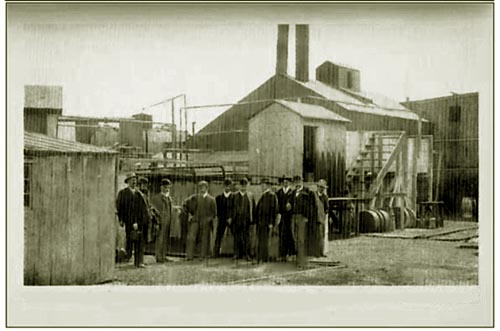
Casper's original Refinery.
In 1909, the Franco-Wyoming Oil Company was organized by
French and Belgian interests under Delaware law. Because of requirement of the
Paris Bourse, the stock was controlled by the Trust Francais des Actions de la Franco Wyoming Oil Co.

Casper, Refinery, 1907.
In 1911, a six inch pipeline was constructed by a subsidiary of Franco-Wyoming from Salt Creek to Casper.
In 1912, Franco-Wyoming constructed another small refinery having a capacity of
500 barrels a day.
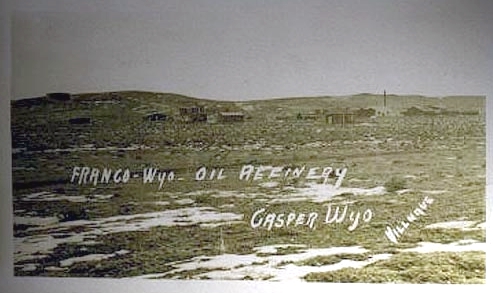
Franco-Wyoming Refinery, Casper
The Franco-Wyoming Refinery was
later acquired by the Midwest Oil Company which replaced it with a larger refinery on the
future site of the BP Refinery on the Platte River. The demand, however, for petroleum remained scant until the
world's major navies converted to oil prior to World War I and the "gas buggy" became popular.
To create a demand, Midwest convinced the Chicago and North Western to convert its coal fired
steam locomotives to oil.
Until those developments, petroleum's value was primarily for lubricants and as
a replacement for whale oil in lamps. Indeed, prior to the Civil War, Wyoming petroleum obtained from
petroleum springs was mixed with
flour and sold as a lubricant for the emigrants' wagons on the Oregon Trail.
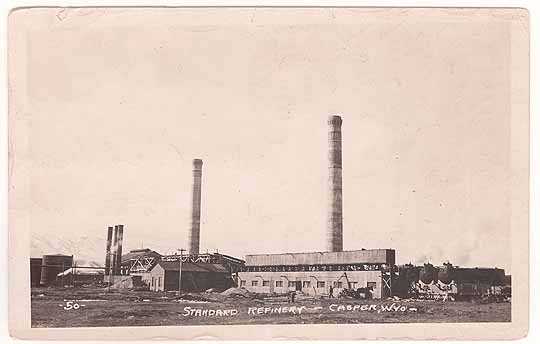
Standard Refinery, Casper, undated
It was not until 1910 and 1913,
with the development of large fields in
Salt Creek, that larger refineries were constructed in Casper by Standard and Midwest. Midwest also
constructed a refinery in Greybull, and
Producer and Refiners constructed a refinery in its planned community, Parco (now Sinclair).
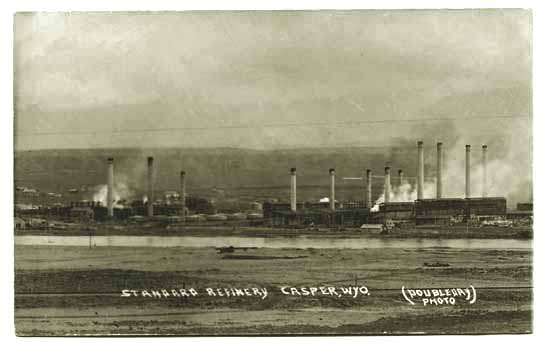
Standard Refinery, Casper, undated. Photo by Ralph Doubleday.
With the opening of the Big Muddy field near Glenrock in 1916, Ohio built a refinery in
Glenrock. The BP and Marathon refineries are gone now, but their legacy remains with the required
environmental cleanups and adaptive reuse of the BP land in Casper.
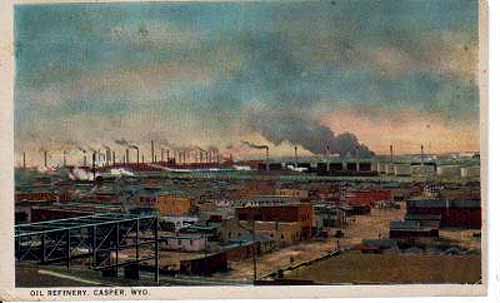
Casper Refineries, 1918
Casper Photos continued on next page.
|